| 30 May |
• yesterday • tomorrow |
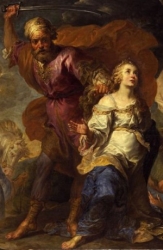
Dympna, Dimpna, Dympne
Daughter of a pagan Irish chieftain named Damon, and a beautiful devoted Christian woman whose name has not come down to us. Her mother died when Dymphna was a teenager. Her father searched the Western world for a woman to replace his wife, but none could. Returning home, he saw that his daughter was as beautiful as her mother, and maddened by grief, he made advances on her. She fought him off, then fled to Belgium with Saint Gerebernus, an elderly priest and family friend.
Dymphna's father searched for them, and his search led to Belgium. There an innkeeper refused to accept his money, knowing it was difficult to exchange. This told Damon that his daughter was close - it would be unusual for a village innkeeper to know a lot about foreign currency, and his knowledge indicated that had recently seen it. The king concentrated his search in the area. When he found them in Gheel, he beheaded Gerebernus, and demanded that Dymphna surrender to him. She refused, and he killed her in a rage.
The site where she died is known for its miraculous healings of the insane and possessed. There is now a well-known institution on the site, and her relics are reported to cure insanity and epilepsy.
Ireland
beheaded in Gheel, Belgium
• against sleepwalking; sleepwalkers
• against epilepsy; epileptics
• against insanity, mental illness or mental disorders; mentally ill people
• for family happiness
• incest victims
• against the loss of parents
• martyrs
• mental asylums, mental health caregivers, mental health professionals, mental hospitals, psychiatrists, psychologists, therapists
• nervous or neurological disorders
• possessed people
• princesses
• rape victims
• runaways
• woman being beheaded by a king
• kneeling at Mass while her father murders the priest Gerebernus
• lamp
• praying in a cloud surrounded by a group of lunatics bound with golden chains
• princess holding a lamp and sword
• princess with a sword holding the devil on a leash
• young woman with Saint Gerebernus
• woman with a sword in her hand and a fettered devil at her feet
Lord, our God, you graciously chose Saint Dymphna as patroness of those afflicted with mental and nervous disorders. She is thus an inspiration and a symbol of charity to the thousands who ask her intercession. Please grant, Lord, through the prayers of this pure youthful martyr, relief and consolation to all suffering such trials, and especially those for whom we pray. (Here mention those for whom you wish to pray). We beg you, Lord, to hear the prayers of Saint Dymphna on our behalf. Grant all those for whom we pray patience in their sufferings and resignation to your divine will. Please fill them with hope, and grant them the relief and cure they so much desire. We ask this through Christ our Lord who suffered agony in the garden. Amen.
https://catholicsaints.info/saint-dymphna/

Son of Alfonso IX, King of Leon, and Berengaria, daughter of King Alfonso III of Castile; cousin of Saint Louis IX. King of Castile in 1217 at age 18. King of Leon in 1230. King of Palencia, Valladolid, and Burgos. Married to Princess Beatrice, daughter of Philip of Swabia, King of Germany. The couple had seven sons and three daughters. In his later years, Ferdinand's father desired to return to his throne, and he turned against Ferdinand; he eventually gave up the idea, however, and the two reconciled. Following the death of Beatrice in 1236, Ferdinand married Joan of Ponthiers, with whom he had two sons and a daughter.
A stern judge when it came to the law, he was gentle and forgiving in his personal life. Founded the University of Salamanca. Rebuilt the Cathedral of Burgos. Crusaded for 27 years against the Muslims in Spain. Successfully held back Islamic invasions in 1225, and took Cordoba and Seville from them in 1234-36. Founded the Cathedral of Burgos and the University of Salamanca. Converted the Great Mosque in Seville to a cathedral.
A man of great faith and devotion, especially to Our Lady, Ferdinand founded and funded hospitals, bishoprics, monasteries, and churches. He reformed Spanish law, and compiled it into a form used for centuries after. An excellent administrator and just ruler, often pardoning those who worked against the crown. Strove always to use his power to better his people and his nation.
1198 near Salamanca, Spain
• 30 May 1252 at Seville, Spain of natural causes
• buried at the Cathedral of Seville in the habit of the Secular Franciscan Order
• body reported incorrupt
• miracles reported at the tomb
31 May 1655 by Pope Alexander VII
1671 by Pope Clement X
• authorities, governors, rulers
• engineers
• large families
• magistrates
• parenthood
• paupers, poor people
• prisoners
• Spanish monarchy
• tertiaries
• Seville, Spain
• Ilagan, Philippines, diocese of
• Lucena, Philippines, diocese of
• San Fernando, Philippines, diocese of
greyhound
https://catholicsaints.info/saint-ferdinand-iii-of-castille/

• Jean D'arc
• Jeanne d'Arc
• Jehanne Darc
• Maid of Orleans
One of five children born to Jacques d'Arc and Isabelle Romee. Shepherdess. Mystic. From age 13 she received visions from Saint Margaret of Antioch, Saint Catherine of Alexandria, and Michael the Archangel.
In the early 15th century, England, in alliance with Burgundy, controlled most of what is modern France. In May 1428 Joan's visions told her to find the true king of France and help him reclaim his throne. She resisted for more than three years, but finally went to Charles VII in Chinon and told him of her visions. Carrying a banner that read "Jesus, Mary", she led troops from one battle to another. She was severely wounded, but her victories from 23 February 1429 to 23 May 1430 brought Charles VII to the throne. Captured by the Burgundians during the defence of Compiegne, she was sold to the English for 10 thousand francs. She was put on trial by an ecclesiastical court conducted by Cauchon, Bishop of Beauvais, a supporter of England, and was excuted as a heretic. In 1456 her case was re-tried, and Joan was acquitted (23 years too late).
"About Jesus Christ and the Church, I simply know they're just one thing, and we shouldn't complicate the matter." - Saint Joan of Arc, as recorded at her trial
6 January 1412 at Greux-Domremy, Lorraine, France
burned alive on 30 May 1431 at Rouen, France
16 May 1920 by Pope Benedict XV
• captives, prisoners
• martyrs
• opposition of Church authorities
• people ridiculed for their piety
• rape victims
• soldiers
• France
• WACs (Women's Army Corps)
• WAVES (Women Appointed for Voluntary Emergency Service)
bareheaded girl in armour with sword, lance or banner
https://catholicsaints.info/saint-joan-of-arc/
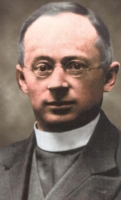
Ottone Neururer
Twelfth and youngest child of a peasant family, Otto grew up on a small farm with a mill. His father died when the boy was still young. His mother was devout, but suffered periodic bouts of depression. Otto was known as a brilliant but timid young man who also battled depression. He attended seminary at Brixen, Italy. Priest. Curate and religion teacher in several places in the diocese.
At the turn of the 20th century, ideological and social tensions arose in Tyrol, both in political and ecclesiastical circles. Otto joined the Christian Social Movement which caused problems with his more conservative superiors.
Nazis occupied the Tirol in 1938, at a time when Otto Neururer was parish priest in Gotzens, Austria. The occupation triggered a bloody persecution of the Church in Austria. Thousands of the faithful were harassed, interrogated by the Gestapo, imprisoned, thrown into concentration camps, and/or murdered.
Father Otto counseled a girl in his parish not to marry a divorced man who was leading a dissolute life. The man was a personal friend of the Gauleiter, the highest Nazi authority in the Tyrol, and Otto's intervention brought down the wrath of the Nazis. Neururer was arrested for "slander to the detriment of German marriage," and imprisoned in Dachau and Buchenwald. He suffered the abuse that was standard in these places, and was routinely tortured, but ministered to his new flock of fellow sufferers, even sharing his scant rations with prisoners weaker than himself. In Buchenwald he was approached by a prisoner who asked to be baptized. Otto suspected a trap, but felt he could not refuse. Two days later he was transferred to the "bunker", the place of extreme punishment, where he was hanged upside down until he died, the first priest killed in a concentration camp.
25 March 1881 at Piller, Tyrol, Austria
• 30 May 1940 at Buchenwald, Thuringia, Germany
• relics (urn of his ashes) at Gotzens, Austria
24 November 1996 by Pope John Paul II
https://catholicsaints.info/blessed-otto-neururer/
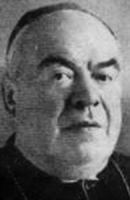
Hammer of Socialism (a nickname given by his parishioners)
Son of a railway worker. Baptized on 30 May 1866. Entered seminary in Padua, Italy in October 1881. Ordained on 22 December 1888. Assigned to Gallio, Italy where he worked with boys who seemed to have a vocation to the priesthood. Archpriest of Gallio in 1890. Transferred to the impoverished parish of Agna in Padua in 1900, he worked with his parishioners to be bring out the best in their human and spiritual gifts. Fought against the rising socialist anti-Christian, anti-clerical movement. Bishop of Città di Castello, Italy from 8 January 1910 until his death 24 years later. In that position he continued to fight against socialists, secularists and anti-Church forces. Built schools for the poor in 1910, 1915 and 1920, a library in 1919, and a summer camp in Pesaro, Italy for the poor, sick and disabled in 1925. Founded the Congregation of the Little Servants of the Sacred Heart to work in these schools and more; they received papal approval on 16 October 1916. Cared for those displaced in World War I, founded a newspaper for the laity and one for his priests.
29 May 1866 in Vicenza, Italy
• 7 July 1932 in hospital in Fano, Pesaro, Italy from injuries received in an automobile accident on 24 June
• buried in the cemetery of Città di Castello, Italy
• relics re-interred in a marble sarcophagus in crypt of the cathedral of Città di Castello on 5 March 1933
• 27 May 2007 by Pope Benedict XVI
• recognition celebrated by Cardinal José Saraiva Martins in the cathedral of Citta di Castello, Italy
https://catholicsaints.info/blessed-carlo-liviero/

Giuseppe Marello
Son of Vincenzo and Anna Maria Marello. His mother died when Joseph was very young, and the family moved from Turin to Santi Martino Alfieri. Entered the seminary at age 12. Contracted typhus at age 19; promised Our Lady that if he survived, he would continue his studies to be ordained. He recovered, attributed the cure to Our Lady of Consolation, and was ordained on 19 September 1868.
Secretary to Bishop Carlo Savio at Asti, Italy for 13 years. Attended the First Vatican Council with Bishop Savio in 1869 and 1870. Took over an Asti retirement home to save it from bankruptcy. Spiritual director and catechist in his diocese. Founder of the Oblates of Saint Joseph in 1878, a congregation dedicated to caring for the poor, educating the young, and assisting bishops in any capacity required.
Bishop of Acqui, Italy on 17 February 1889. Visited all the parishes in his diocese, and wrote six pastoral letters to his flock. Died while participating in a celebration of the 3rd centennial of Saint Philip Neri.
26 December 1844 at Turin, Italy
30 May 1895 of cerebral hemorrhage at Savona, Italy
25 November 2001 by Pope John Paul II
He was a gem among bishops. - Pope Leo XIII
O Glorious Saint Joseph, after the Blessed Virgin, you were the first to hold in your arms the Redeemer. May you teach us; may you assist us, may you make us worthy members of the Holy Family. - Saint Joseph Marello
https://catholicsaints.info/saint-joseph-marello/
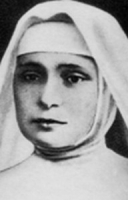
• Jeanne-Germaine Castang
• Joan Germana Castang
• Marie-Céline Castang
Fifth of twelve children born to a poor but pious family. Due to a childhood illness, one of her legs was paralyzed, but she always helped where she could, and basically took over housekeeping for the family when her mother died. Lived five years with the Sisters of Nazareth. Entered the Poor Clares in Bordeaux, France on 12 June 1896. Made her profession on 21 November 1896, taking the name Marie-Celine of the Presentation. Her health, never great, continue to fail, but she became a model of joy within suffering for her sisters.
24 May 1878 in Nojals, Dordogne, France as Jeanne-Germaine Castang
• 30 May 1897 in Bordeaux, Gironde, France of tuberculosis of the bone
• interred at the Poor Clare monastery in Bordeaux
• 16 September 2007 by Pope Benedict XVI
• recognition celebrated at the Cathedral of Bordeaux, France by Cardinal José Saraiva Martins
https://catholicsaints.info/blessed-marie-celine-of-the-presentation/
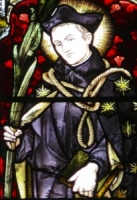
• 29 October as one of the Martyrs of Douai
• 1 December as one of the Martyrs of Oxford University
Son of Laurence Cottam and Anne Brewer; raised in a Protestant family. Educated at Brasenose College, Oxford, England, receiving a Master of Arts on 14 July 1572. Master of a grammar school in London, England. Adult convert to Catholicism. Studied at Douai, France, and at Rome, Italy. Deacon at Cambrai, France in December 1577. Joined the Jesuits in Rome on 8 April 1579 in hopes of becoming a missionary to India. Ordained on 28 May 1580 at Soissons, France. Returned to England in June 1580 to recuperate following a severe fever. Arrested at his landing in Dover for the crime of priesthood. He was imprisoned in Marshalsea, and it is likely that celebrated his first Mass in prison. Tortured and then transferred to the Tower of London for additional abuse. Condemned to death on 16 November 1581. Martyr.
1549 in Dilworth, Lancashire, England
hanged on 30 May 1582 at Tyburn, London, England
29 December 1886 by Pope Leo XIII (cultus confirmed)
https://catholicsaints.info/blessed-thomas-cottam/
• 25 October as one of the Forty Martyrs of England and Wales
• 29 October as one of the Martyrs of Douai
Educated at Cambridge University in England. Converted to Catholicism in Louvain, France. Seminarian at Douai College in 1576. Ordained at Cambrai, France in September 1577. Took the oath of the English College in Rome, Italy on 23 April 1579. Returned to England to minister to covert Catholics. When he arrived in Dover in June 1580 he was arrested for the crime of being a priest. Transferred to the Tower of London on 4 December 1580. Tortured. Condemned to death on 17 November 1581, he spent several more months in prison, the last few weeks in chains. One of the Forty Martyrs of England and Wales.
c.1549 in northern England
hanged on 30 May 1582 at Tyburn, London, England
• 29 December 1886 by Pope Leo XIII (cultus confirmed)
• 4 May 1970 by Pope/a> Paul VI (decree of martyrdom)
25 October 1970 by Pope Paul VI
https://catholicsaints.info/saint-luke-kirby/

• Walstan of Norfolk
• Walstan the Generous
• Walstan of Taversham
• Walston, Valstano
Son of a prince, Walstan left home at an early age to live as a mendicant pilgrim and itinerant farm worker. One of his employers liked him so much that he wanted to make Walstan an heir, but the young man declined, asking only for a pregnant cow. Legend says that the cow had twins, and when Walstan died while working in the fields, the calves carried his body to Bawburgh church, passing through solid walls to leave the body at the altar.
965 at Bawburgh, Norfolk, England
1016 in Taverham, Norfolk, England of natural causes
agricultural workers, farm workers, farmers, field hands, husbandmen
• man wearing a crown and holding a scythe
• man holding a sceptre and scythe
• man with two calves
https://catholicsaints.info/saint-walstan-of-bawburgh/
• Lawrence Johnson
• Laurence Richardson
• 29 October as one of the Martyrs of Douai
• 1 December as one of the Martyrs of Oxford University
Son of Richard Johnson, Lawrence was born to an ancient landed family known for its piety. Educated at Brasenose College, Oxford. Convert to Catholicism. Seminarian at Douai, France in 1573. Ordained on 23 March 1577. He returned to Lancashire, England in 1578 to minister to covert Catholics, using the name Lawrence Johnson. Arrested in London, in 1581, accused of treason as part of the phony Rheims and Rome Plot. He spent his remaining months chained and abused in the Tower of London. Martyr.
Great Crosby, County Lancaster, England
hanged on 30 May 1582 at Tyburn, London, England
26 December 1886 by Pope Leo XIII (cultus confirmed)
https://catholicsaints.info/blessed-lawrence-richardson/
Brother Maurus
Studied law at Cambridge University. Adult convert to Catholicism, brought to the faith by Blessed John Roberts. Studied at Saint Facundus Benedictine Abbey in Sahagun, Spain. Benedictine, taking the name Maurus. Priest. He returned to England to minister to covert Catholics, but was caught, imprisoned for a year, and then exiled. He returned, was captured, imprisoned and exiled; he then returned as was captured and exiled; he then returned, was captured and finally executed. Martyred in the persecutions of King James I.
Chigwell, Essex, England
hanged, drawn and quartered on 30 May 1612 at Tyburn, London, England
15 December 1929 by Pope Pius XI
https://catholicsaints.info/blessed-william-scott/
• 29 October as one of the Martyrs of Douai
• 1 December as one of the Martyrs of Oxford University
Educated at Lincoln College, Oxford, England. Seminarian at Rheims, France beginning on 12 October 1579. Ordained on 25 March 1581. Soon after he returned to England to minister to covert Catholics. Arrested in July 1579 for the crime of priesthood, he was imprisoned in the Tower of London and Marshalsea prison. Abused for several months, and then executed. Martyr.
c.1557 in Oxfordshire, England
hanged on 30 May 1582 at Tyburn, London, England
26 December 1886 by Pope Leo XIII (cultus confirmed)
https://catholicsaints.info/blessed-william-filby/
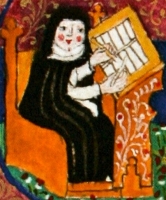
• Elisabeth Staglin
• Elisabeth Steiglin
• Elsbeth...
Born to the nobility. Dominican nun. Friend and spiritual student of Blessed Henry Suso; unknown to him, she kept all their correspondence and wrote down their conversations about relgious life. When he found out, Elisabeth gave Henry her writings and he burned most of them as he did not want to be seen as promoting the level of self-denial and asceticism that he lived. Prioress of the convent in Töss, Switzerland.
c.1300 in Zurich, Switzerland
c.1360 of natural causes
https://catholicsaints.info/blessed-elisabeth-stagel/
Richard Smith
29 October as one of the Martyrs of Douai
Studied in Douai, France and Rome, Italy, and ordained in 1597. Returning to England, he minister to covert Catholics in London for several years. He was imprisoned and exiled twice for the crime of being a priest, returning each time before being arrested and condemned to death. Martyred in the persecutions of King James I.
Ashby Saint Legers, Northamptonshire, England
hanged, drawn and quartered on 30 May 1612 at Tyburn, London, England
15 December 1929 by Pope Pius XI
https://catholicsaints.info/blessed-richard-newport/

Mattias Kalemba Murumba
3 June as one of the Martyrs of Uganda
Born to the Lugave clan. A man who was seeking God, he converted first to Islam, and then to Christianity. Martyred in the Mwangan persecutions.
at Busoga, Uganda
hacked to pieces on 27 May 1886 at Old Kampala, Uganda
18 October 1964 by Pope Paul VI at Rome, Italy
https://catholicsaints.info/saint-matiya-mulumba/
Son of Saint Macrina the Elder; married to Saint Emmelia; father of Saint Basil the Great, Saint Gregory Nyssen, Saint Peter of Sebaste, and Saint Macrina the Younger. Exiled for his faith during the persecutions of Emperor Galerius Maximianus, he eventually returned home and live to an old age and became known as an example of Christian virtue to all.
Caesarea, Cappadocia
in 370 in Caesarea, Cappadocia of natural causes
https://catholicsaints.info/saint-basil-the-elder/
Exsuperantius, Essuperanzio
Bishop of Ravenna, Italy c.397. He served for 20 years and was known not just for his spiritual leadership, but for his great charity.
4th century Italy
• 418 of natural causes
• buried in the church of Saint Agnes at Ravenna, Italy
• relics enshrined in the cathedral of Ravenna
https://catholicsaints.info/saint-exuperantius-of-ravenna/
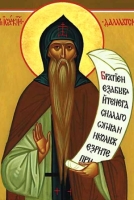
Isaac of Dalmatia
While still a layman, he publicly opposed the Arian heresy of Emperor Valens. Monk. Abbot at Constantinople.
30 May 383 at Constantinople of natural causes
Romanov dynasty
https://catholicsaints.info/saint-isaac-of-constantinople/
Emmélie, Emilie, Emilia, Emelia
Married to Saint Basil the Elder; mother of Saint Basil the Great, Saint Gregory Nyssen, Saint Peter of Sebaste, and Saint Macrina the Younger. Exiled for his faith during the persecutions of Emperor Galerius Maximianus, she eventually returned home.
in Caesarea, Cappadocia of natural causes
https://catholicsaints.info/saint-emmelia/
Gabinus, Gavinus
25 October in Sardinia
Missionary priest in Sardinia, Italy. Martyred in the persecutions of Hadrian.
c.130 at Porto Torres, Sardinia, Italy
https://catholicsaints.info/saint-gavino-of-sardinia/
Maguil, Mauguille
Spiritual student of Saint Fursey. Monk at Saint Riquier Abbey in France. Retired to live as a hermit with Saint Pulgan near Monstrelet, France.
Ireland
c.655
https://catholicsaints.info/saint-madelgisilus/
Early bishop of Cagliari, Sardinia, Italy. Martyr.
• early 2nd century in Cagliari, Sardinia, Italy
• relics enshrined in the crypt under the cathedral of Cagliari
https://catholicsaints.info/saint-restitutus-of-cagliari/
Elder brother of Saint Honoratus of Arles. Lived as a hermit on an island near Cannes, France. Lived and studied monasticism in Greece, Egypt and Palestine.
c.400
https://catholicsaints.info/saint-venantius-of-lerins/
A follower of the Arian heresy, he converted to orthodox Christianity and eventually became bishop of Pavia, Italy in 668 where he served for 12 years.
680
https://catholicsaints.info/saint-anastasius-ii-of-pavia/
Martyr.
• date unknown, but a gravestone in Riesenbeck, Germany dates from the early 12th century
• some relics in Riesenbeck
https://catholicsaints.info/saint-reinhildis-of-riesenbeck/
Missionary in Sardinia, Italy. Martyred in the persecutions of Hadrian.
c.130 at Porto Torres, Sardinia, Italy
https://catholicsaints.info/saint-crispulus-of-sardinia/
Eighth century Benedictine monk. Abbot of near Noyon, France. Worked for expansion of the monastic movement. Noted patron of the arts.
https://catholicsaints.info/saint-gamo-of-brittany/
Martyr.
rolled in a cowhide and laid out in the sun to be crushed as it shrank
https://catholicsaints.info/saint-euplius/
Three Christians martyr together. We have no other details than their names - Cantianus, Euthymius and Eutychius.
Aquileia, Italy
https://catholicsaints.info/martyrs-of-aquileia-30-may/
• Marta Maria Wiecka
• Palatinus
• Sycus
CatholicSaints.Info Portable Edition